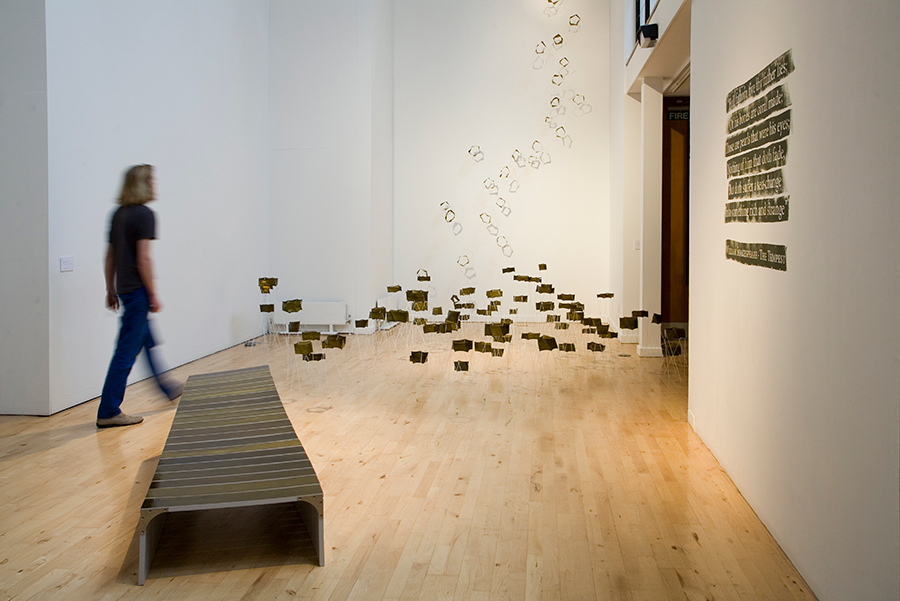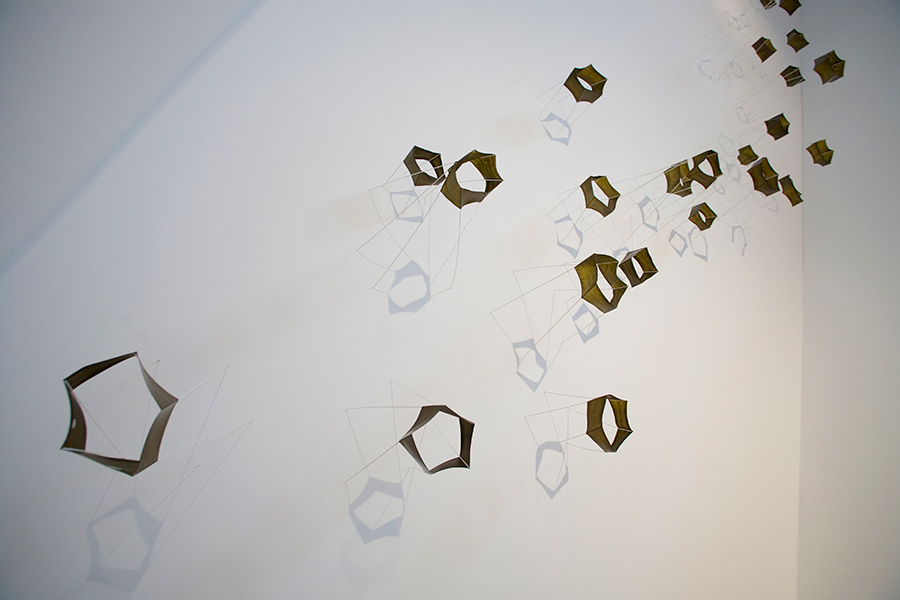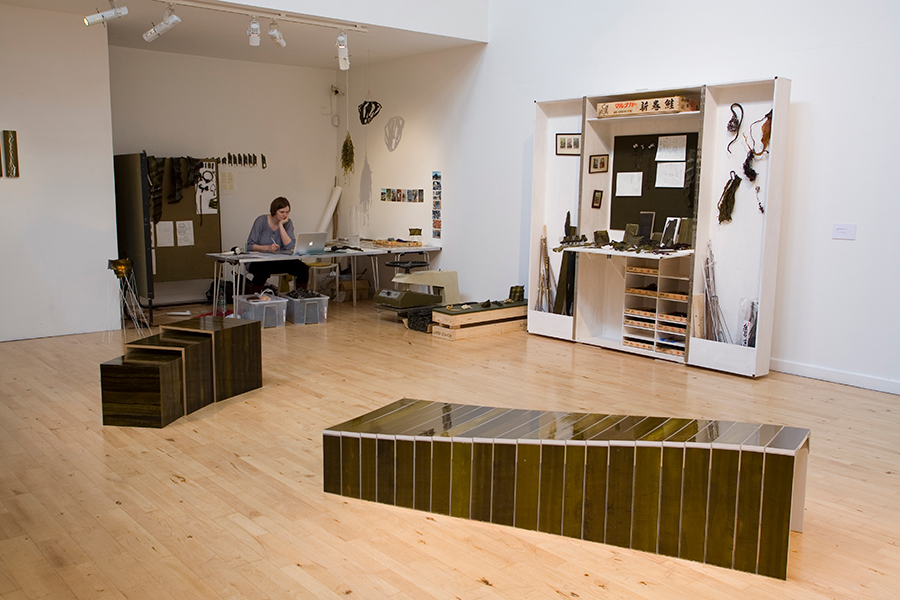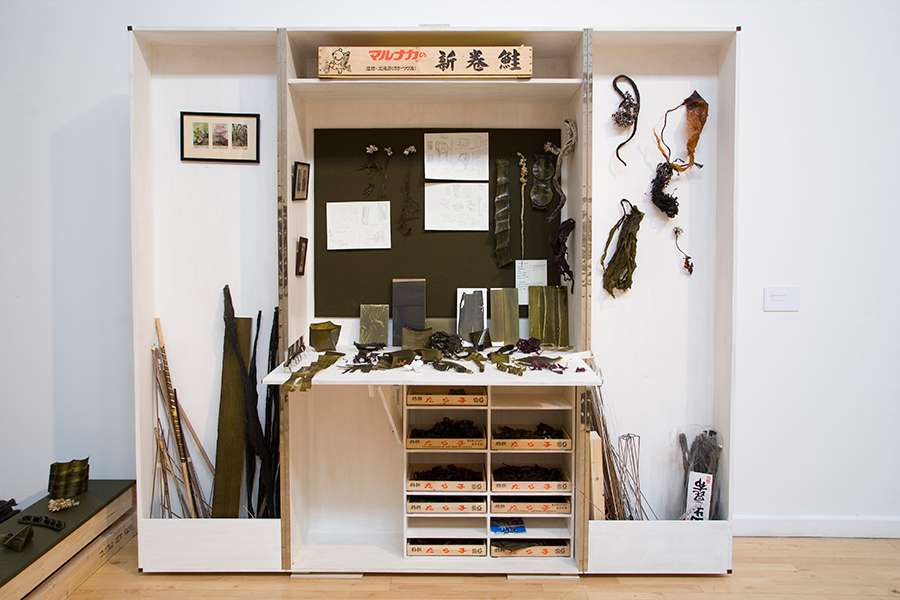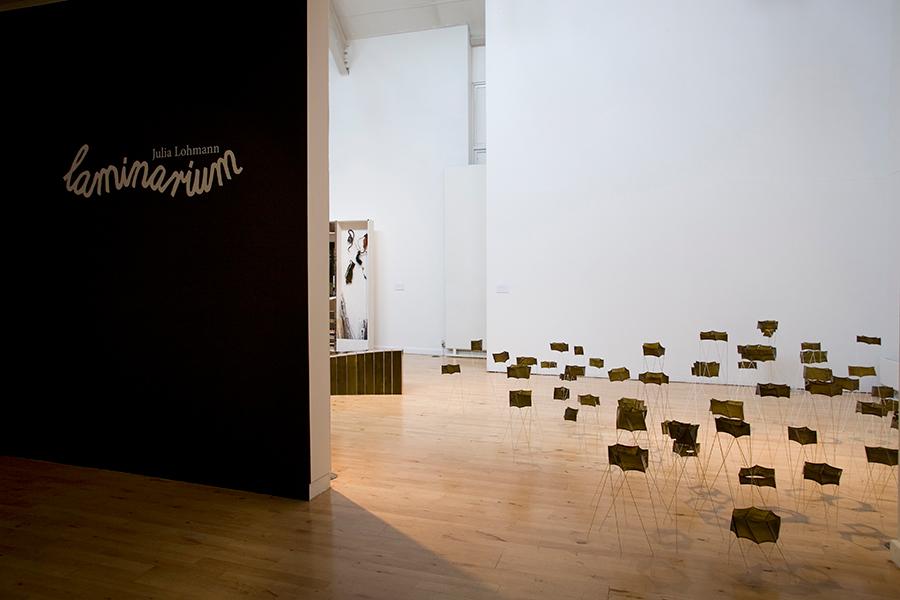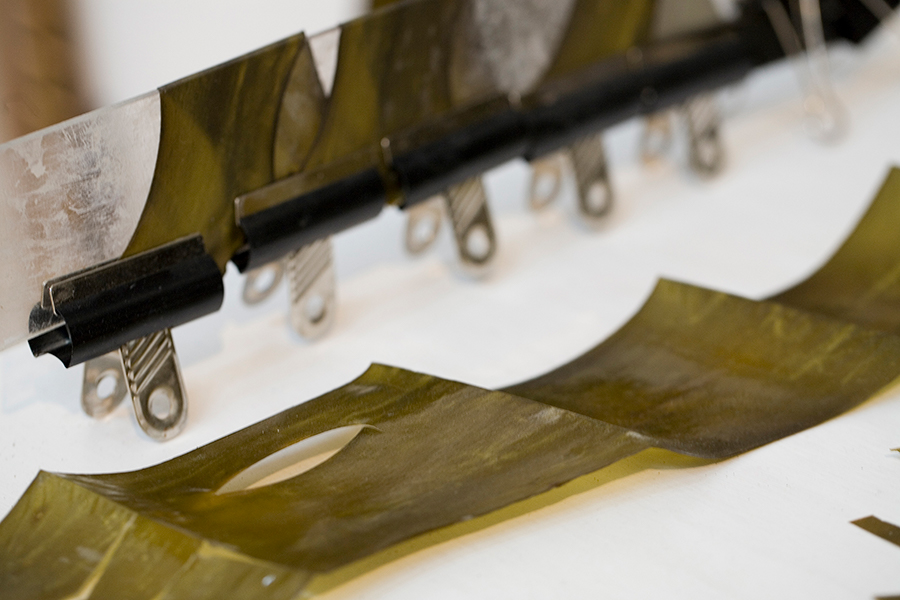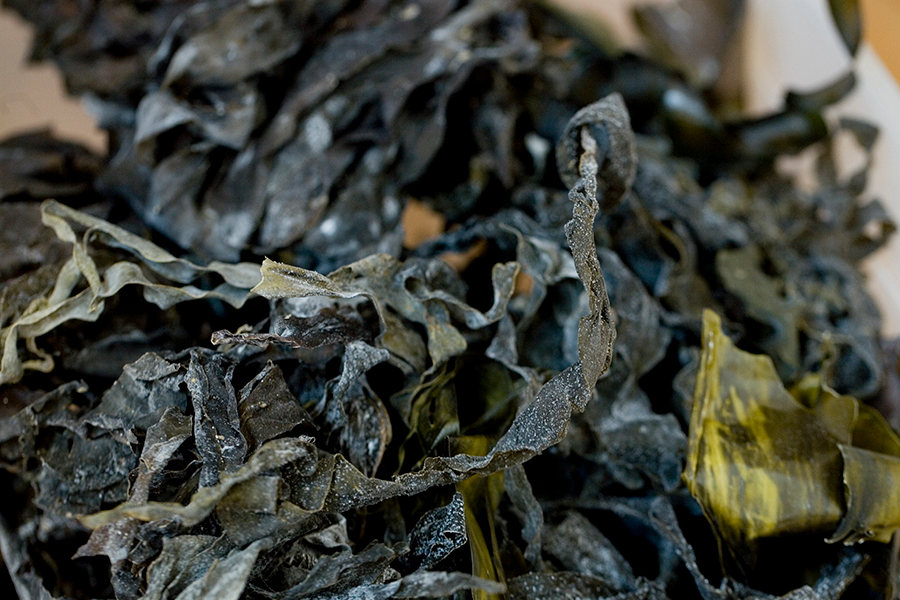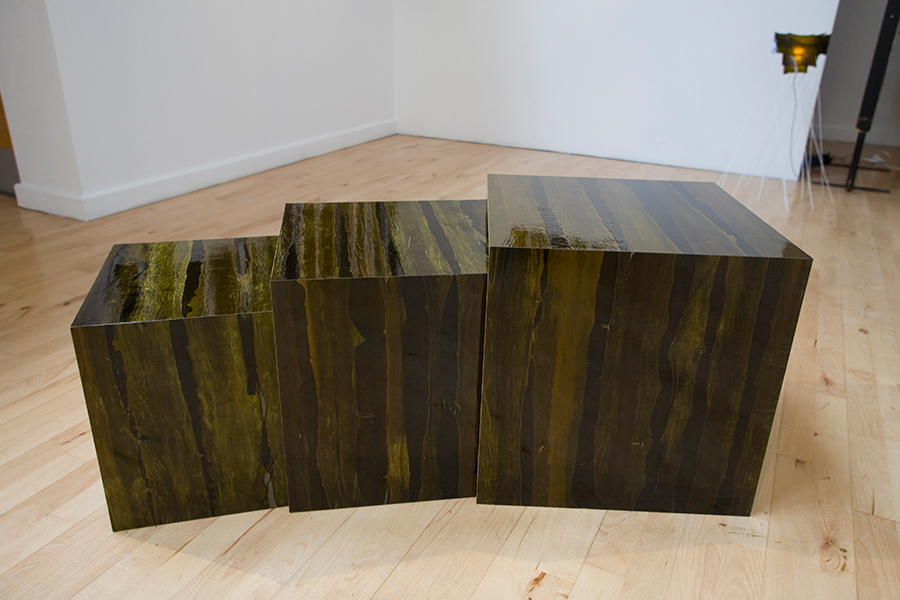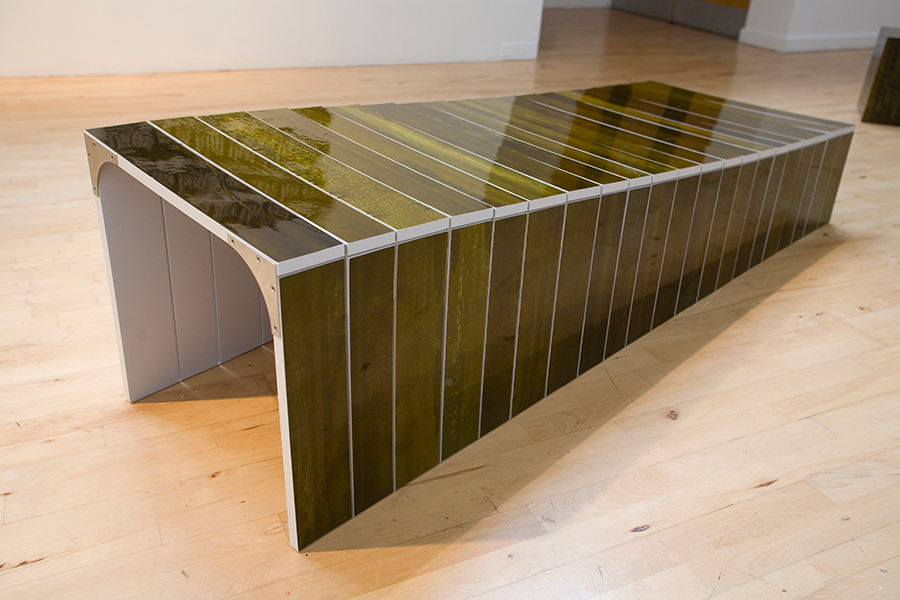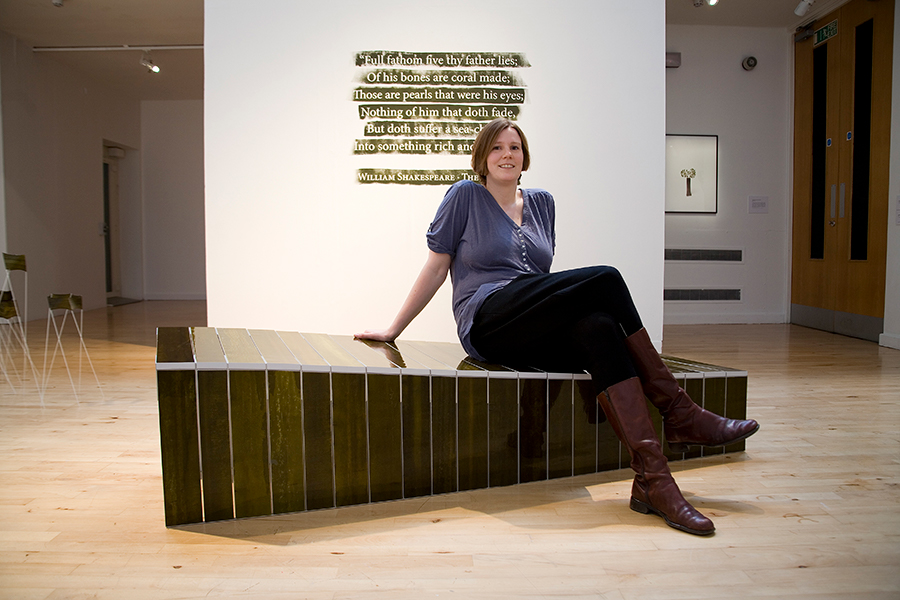Julia Lohmann has established a strong reputation for her highly imaginative approach to sustainable product design, through exploring the creative possibilities and materiality of natural and renewable sources.
Lohmann’s designs provoke us to consider the processes that normally go unmentioned between the life of an animal, plant or mineral and the point at which it is made into a design object: whole cow-hides reconstructed into benches that imitate the original form of the reclining animal;chandeliers made of dried sheep stomachs; jewellery and other precious objects made of polished bones salvaged from the banks of the river Thames or decorated with growing colonies of marine bryozoans.
For her Stanley Picker Fellowship, Lohmann has been exploring the luminosity, colour and structural strength of kelp as a natural alternative to both man-made plastics and endangered woods. Explaining her fascination with the material, she says:
“Planted around a fish farm, a kelp forest acts as a natural filter, cleaning the water it inhabits. Collapsing fish stocks have left many fishing communities without hope for the future. Translucent, sustainable and strong, kelp is a magnificent material that has not yet been fully explored. Could kelp farming grow into a viable alternative industry?”
Taking samples of seaweed from around the world, including Iceland, Ireland and Japan, the harvested material is re-hydrated and shaped by stretching and pressing. Exploring the way each specimen creates its own distinct surfaces and textures, Lohmann has discovered some surprisingly innovative and alluring new design applications for this most abundant yet under-exploited of natural materials.
